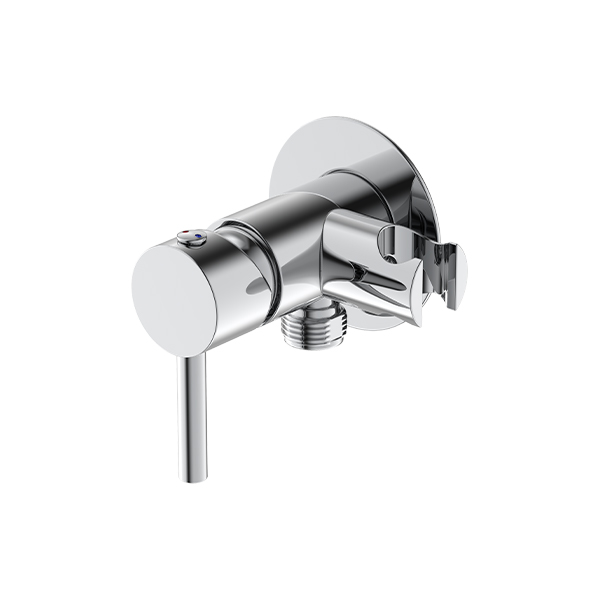A built-in hygienic mixer faucet is a type of plumbing fixture designed to combine water temperature control with enhanced convenience for personal hygiene. It is most commonly seen in modern bathrooms, especially in spaces that prioritize cleanliness and efficient water use.

1. Definition and Core Components
A built-in hygienic mixer faucet can be understood as a faucet that integrates a water mixer with a bidet or spray function for improved hygiene. Unlike traditional faucets that only provide water flow into sinks or basins, this type includes an extendable or fixed handheld sprayer. The user can directly control both temperature and pressure through the mixer valve.
The fixture usually consists of:
- A concealed mixing valve installed inside the wall
- A temperature and flow control handle
- A handheld spray head or bidet nozzle
Flexible hose and connectors
This setup helps maintain a neat wall appearance because the essential pipes are hidden, allowing only the operational components to remain visible. It supports both hot and cold water mixing to provide comfortable usage in daily hygiene routines.
2. Focus on Personal Hygiene and Comfort
One of the major purposes of a built-in hygienic mixer faucet is to improve personal hygiene. It is often used as a cleaning aid after using the toilet, functioning similarly to a bidet. Many households and public facilities find this method more hygienic compared to toilet paper alone, as the water spray offers more thorough cleaning.
For instance, in regions like the Middle East and some parts of Asia, handheld bidet sprayers are commonly found in homes, restaurants, and hotels. These built-in faucet systems support cultural practices where water cleansing is seen as an essential component of hygiene. Moreover, people with physical limitations or elderly users may find water-assisted cleaning more comfortable and manageable than relying solely on paper products.
Personal comfort also improves because users can adjust the water temperature to a suitable level. This flexibility is beneficial in colder climates where using cold water might cause discomfort.
3. Space Optimization and Bathroom Aesthetics
Another advantage relates to bathroom layout and appearance. Since the mixing valve is installed inside the wall, it reduces visible surface clutter. This design helps maximize floor and wall space, especially in compact bathrooms where every centimeter counts.
Modern interior design trends emphasize clean lines and minimalism. Built-in hygienic mixer faucets fit well into these styles by keeping the visible components simple and streamlined. For example, in a renovation project for a small apartment bathroom, choosing a built-in faucet with a hygiene sprayer can eliminate the need for a separate bidet fixture. This provides more usable space while maintaining functionality.
Additionally, manufacturers often offer a variety of finishes such as chrome, matte black, or brushed nickel. These choices allow users to match the fixture to other bathroom accessories like shower sets, towel racks, and basin faucets.
4. Ease of Use and Functional Versatility
Users can operate the faucet using a single lever or handle, making it straightforward to adjust water temperature and flow. The handheld sprayer gives flexibility in directing water where needed, which can support various daily tasks beyond personal hygiene.
Practical examples include:
- Cleaning the toilet bowl more effectively
- Rinsing cloth diapers or garments
- Assisting caregivers in helping children or individuals with limited mobility
- Washing smaller household items in the bathroom area
This versatility increases the functional value of the bathroom without requiring additional equipment.
5. Considerations in Installation and Maintenance
Although a built-in hygienic mixer faucet offers convenience, certain technical considerations should be addressed during installation. Because the valve body is concealed inside the wall, professional installation is usually necessary to ensure proper water pressure management and leak prevention. Governments or local standards in different areas may require backflow preventers or safety valves to protect drinking water systems from contamination.
Maintenance also requires attention. If mineral deposits accumulate in regions with hard water, regular cleaning of the spray nozzle may help maintain smooth operation. Additionally, users should check hose integrity periodically to avoid unexpected leaks.
While repair inside the wall can be more complicated than with surface-mounted fixtures, many modern products include accessible service components that allow repairs through the control handle opening.

 English
English Español
Español русский
русский

